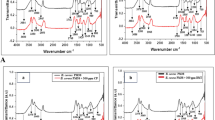Abstract
A total of 14 Azotobacter strains were isolated from different paddy cultivating soils with pH ranging from 6.5 to 9.5 by using serial dilution agar plate method. The strains were Gram negative, rod shaped, cyst forming and developed brown to black colored colonies, which were glistening, smooth, slimy on Ashby’s agar plates. Biochemically they were positive for biochemical tests namely, indole production, citrate, catalase, carbohydrate fermentation and Voges–Proskauer test. Further, sequence analysis of PCR amplicons obtained from these cultures revealed the presence of five different Azotobacter species viz., Azotobacter vinelandii, Azotobacter salinestris, Azotobacter sp., Azotobacter nigricans subsp. nigricans and Azotobacter tropicalis. Phylogenetically these strains were grouped into two distinct clusters. These strains were tested for their ability to grow on a media containing four different pesticides such as pendimethalin, glyphosate, chloropyrifos and phorate, which are commonly used for the paddy. Out of 14 strains tested, 13 strains were able to grow on a media containing herbicides such as pendimethalin, glyphosate and insecticides like chloropyrifos and phorate. However, five Azotobacter strains were able to grow at higher concentration of 5 % pesticides, without affecting their growth rate. Further, the effect of pesticides on the indole acetic acid (IAA) production by Azotobacter strains was also estimated. Azotobacter-16 strain was found to produce 34.4 μg ml−l of IAA in a media supplemented with 1,000 mg of tryptophan and 5 % of pendimethalin. Present study reveals that species of Azotobacter are able to grow and survive in the presence of pesticides and no significant effects were observed on the metabolic activities of Azotobacter species.






Similar content being viewed by others
References
Ahmad F, Ahmad I, Khan MS (2005) Indole acetic acid production by the indigenous isolates of Azotobacter and Fluorescent Pseudomonas in the presence and absence of tryptophan. Turk J Biol 29:29–34
Aleem A, Isar J, Malik A (2003) Impact of long term application of industrial wastewater on the emergence of resistance traits of Azotobacter vinelandii isolated from rhizosphere soil. Bioresour Technol 86:7–13
Aquilanti L, Favilli F, Clementi F (2004) Comparison of different strategies for isolation and preliminary identification of Azotobacter from soil samples. Soil Biol Biochem 36:1475–1483
Castillo JM, Casas J, Romero E (2011) Isolation of an endosulfan degrading bacterium from a coffee farm soil: persistence and inhibitory effect on its biological functions. Sci Total Environ 412–413:20–27
Garg SK, Bhatnagar A, Kalla A, Narula (2001) In vitro nitrogen fixation, phosphate solubilization, survival and nutrient release by Azotobacter strains in an aquatic system. Bioresour Technol 80:101–109
Helmy Q, Kardena E, Nurachman Z, Wisjnuprapto (2010) Application of biosurfactant product by Azotobacter vinelandii AV01 for enhanced oil recovery and biodegradation of oil sludge. Int J Civil Environ Eng 10:7–14
Jimenez DJ, Montana JS, Martienz MM (2011) Characterization of free nitrogen fixing bacteria of the genus Azotobacter in organic vegetable grown in Colombian soils. Braz J Microbiol 42:846–858
Kizilkaya R (2009) Nitrogen fixation capacity of Azotobacter spp. strains isolated from soils in different ecosystems and relationship between them and the microbiological properties of soils. J Environ Biol 30:37–82
Latifi AM, Khodi S, Mirzaei M, Miresmaeili M, Babavalian H (2012) Isolation and characterization of five chloropyrifos degrading bacteria. Afr J Biotechnol 11:3120–3146
Mali GV, Bodhankar MG (2009) Antifungal and phytohormone potential of Azotobacter chroococcum isolates from ground nut (Arachis hypogeal L.) rhizosphere. Asian J Exp Sci 23:293–297
Mao DP, Zhou Q, Chen CY, Quan ZX (2012) Coverage evaluation of universal bacterial primers using the metagenomic datasets. BMC Microbiol 12(66):1–8
Martin XM, Sumathi CS, Kannan VR (2011) Influence of agrochemical and Azotobacter spp. application on soil fertility in relation to maize growth under nursery conditions. Eurasian J Biosci 5:19–28
Moneke AN, Okpala GN, Anyanwu CU (2010) Biodegradation of glyphosate herbicide invitro using bacterial isolates from four rice fields. Afr J Biotechnol 9:4067–4074
Moreno J, Lopez JG, Vela GR (1986) Survival of Azotobacter spp. in dry soils. Appl Environ Microbiol 51:123–125
Myresiotis CK, Vryzas Z, Mourkidou EP (2012) Biodegradation of soil applied pesticides by selected strains of plant growth promoting rhizobacteria (PGPR) and their effects on bacterial growth. Biodegradation 23:297–310
Naik AT, Eranna N, Suresh CK (2007) Influence of Azotobacter chroococcum strains on growth and biomass of Adathoda vasica Nees. Karnataka J Agri Sci 20:613–615
Page WJ, Shivprasad S (1991) Azotobacter salinestris spp. nov., a sodium dependent, micro aerophilic and aero adaptive nitrogen fixing bacteria. Int J Syst Bacteriol 41:369–376
Patil V (2011) Production of indole acetic acid by Azotobacter spp. Recent Res Sci Technol 3:14–16
Rajeswari K, Kasthuri MG (2009) Molecular characterization of Azotobacter spp. nifH gene isolated from marine source. Afr J Biotechnol 8:6850–6855
Ruanpanum P, Tangchitsomkid N, Hyde KD, Lumyong S (2010) Actinomycetes and fungi isolated from plant- parasitic nematode infested soils: screening of the effective biocontrol potential, indole 3- Acetic Acid and siderophores production. World J Microbiol Biotechnol 26:1569–1578
Rubio MGT, Plata SAV, Castillo JB, Nieto PM (2000) Isolation of enterobacteria, Azotobacter sp. and Pseudomonas sp., produces of indole acetic acid and siderophores from Colombian rice rhizosphere. Rev Latinoam Microbiol 42:171–176
Shafiani S, Malik A (2003) Tolerance of pesticides and antibiotic resistance in bacteria isolated from wastewater irrigated soil. World J Microbiol Biotechnol 19:897–901
Sharma SD, Kumar P, Raj H, Bhardwaj S (2009) Isolation of arbuscular mycorrhizal fungi and Azotobacter chroococcum from local litchi orchards and evaluation of their activity in the air layers system. Sci Hortic 6:117–123
Acknowledgement
Isolation, identification and the instrumentation facility was supported Dr. M. K. Naik, professor and Head Dept. of Plant Pathology. Dr. Mahadevaswamy helped in preparing the manuscript and review of literature and other facilities during research work.
Author information
Authors and Affiliations
Corresponding author
Rights and permissions
About this article
Cite this article
Chennappa, G., Adkar-Purushothama, C.R., Suraj, U. et al. Pesticide tolerant Azotobacter isolates from paddy growing areas of northern Karnataka, India. World J Microbiol Biotechnol 30, 1–7 (2014). https://doi.org/10.1007/s11274-013-1412-3
Received:
Accepted:
Published:
Issue Date:
DOI: https://doi.org/10.1007/s11274-013-1412-3




